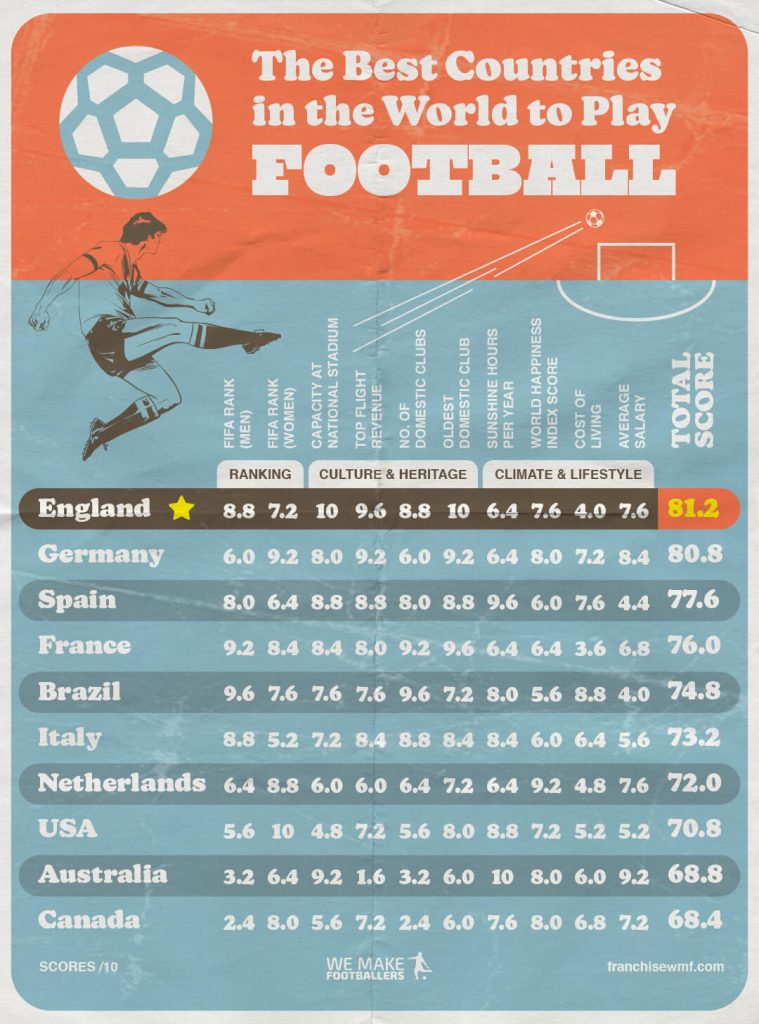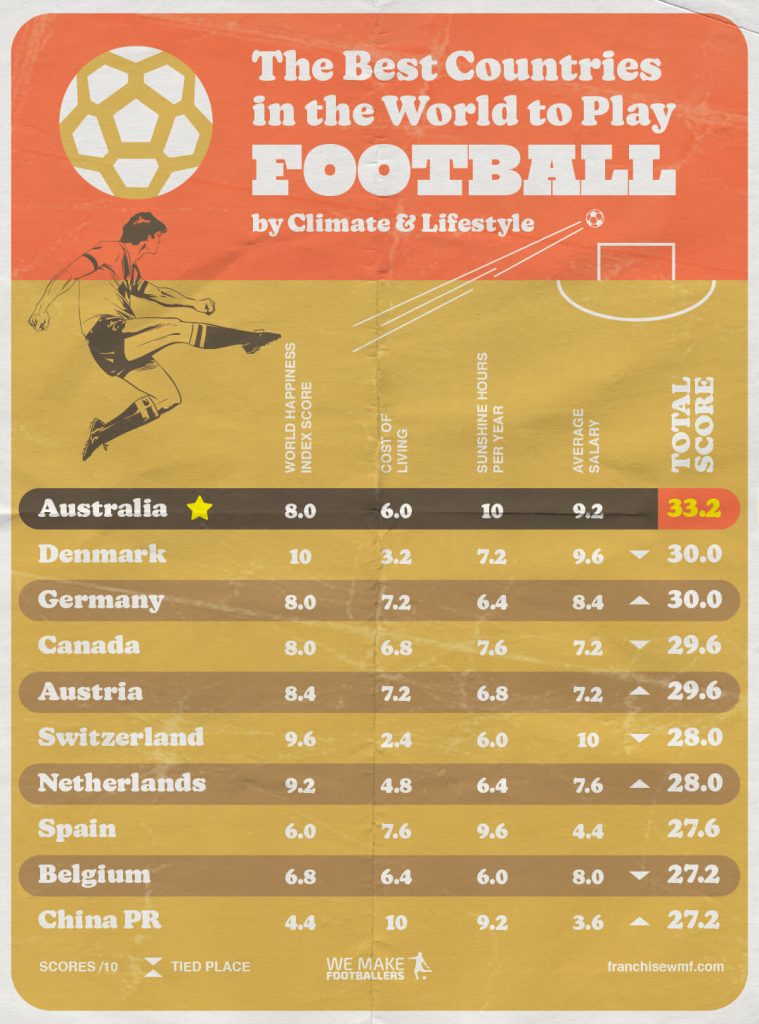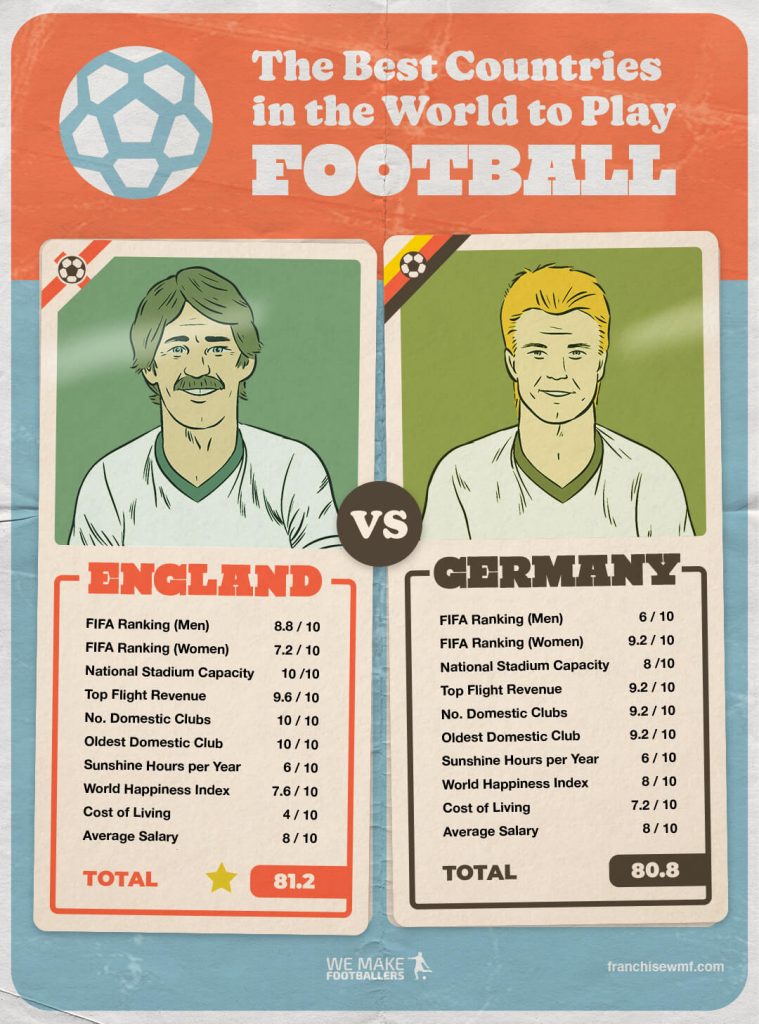Yes, it is another one of those most influential and greatest football managers of all-time lists. These are devilishly hard to produce as everyone has their own opinion on who is the greatest coach ever to sit in a dugout.
Each of the 10 men on our list was famous for the characteristics needed to succeed in coaching. From flexibility to organisation, to man-management, to being able to think outside the box, those attributes enabled each of them to leave a lasting legacy on football and help create the sport that we know and love today.
10) Rinus Michels
A four-time Eredivisie winner, three-time KNVB Cup winner and one time European Cup winner with Ajax. A La Liga and Copa Del Rey winner with Barcelona. A DFB Pokal winner with FC Cologne. A European Championship winner with the Netherlands.
And yet is it the team he managed who never won a trophy with whom Rinus Michels most influenced football – via Total Football.
That was the term lavished upon the playing style of his Netherlands side of the 1970s, considered by many to be the greatest never to win a World Cup.
They came close, losing the final in 1974 to West Germany. It was the team in Oranje who lit up that tournament, delivering some of the most magical football the world has ever seen, led by Johan Cruyff as the on-field conductor.
Cruyff the manager will feature later on our list (no spoilers) as will several other managers who can trace their style and philosophy back to Michels and Total Football. That is some legacy.
9) Jose Mourinho
Heaven helps us if The Special One ever reads this list and sees himself only in ninth place. The ultimate Marmite manager, you either love Jose Mourinho or you hate him. There does not seem to be any middle ground.
In an era of possession football, attacking fullbacks and goals galore where money was often seen as the most important ingredient for success, Mourinho showed us another way when bursting onto the scene with Porto in 2003.
He led the unfashionable Portuguese outfit to a remarkable Champions League win in 2004. Inter Milan were perennial dark horses in Italy before Mourinho arrived. During his time at the San Siro, he won two Serie A titles, a Coppa Italia and his second Champions League trophy.
Mourinho’s success with Porto and Inter came because of a masterclass in man-management. His sides were drilled in how to win games and they highlighted how far organisation can take you.
He did not need bundles of cash to succeed, although that helped him as league titles with Chelsea and Real Madrid proved.
Given what has happened at Manchester United since his sacking from Old Trafford, you could even argue that he did an excellent job at Old Trafford – a statement perhaps as controversial as the man himself.
8) Bill Shankly
Music and football dominated Liverpool in the 1960s. Whilst the Beatles were busy conquering the world, Bill Shankly was setting in place a dynasty that would last for 30 years and turn Liverpool into one of the most famous teams on the planet.
When Shankly arrived at Anfield in 1959, he found a rundown stadium and a club wallowing in the second tier of English football. He delivered the promotion back to the top flight in 1962 and his first league title as Liverpool boss in 1964.
Two more championships would follow alongside a UEFA Cup and two FA Cups, the second of which arrived in 1974 and was followed a few weeks later by Shankly’s shock retirement.
The silverware and taking Liverpool to the top of English football were only part of Shankly’s legacy, however. He believed in a strong connection between players and fans.
He talked about the Kop having the power to “suck the ball into the net”. Shankly was a manager who tapped into the power of football beyond what happened on the pitch in a way nobody else really had.
That feeling of family was central to the concept of the Anfield Bootroom. Shankly was succeeded by his assistant Bob Paisley, who was succeeded by his assistant Joe Fagan, who was succeeded by his player Kenny Dalglish.
Shankly championed continuity and left the foundations in place for each of his successors to continue winning domestic and European trophies for Liverpool.
7) Matt Busby
Adversity is something that all coaches must face and overcome at some point in their careers. It is that ability to stand up and find a way through when all hope seems lost that turns a good football manager into a great football manager.
No manager in history had to battle adversity like Sir Matt Busby. He was already well on his way to immortality at Manchester United before the events of February 6th 1958, having led United to the FA Cup in 1948 and league titles in 1952, 1956 and 1957.
The latter two championships were won by his Busby Babes, a marvellously talented squad of fearless young players with an average age of only 22.
That squad would have won so much more too had eight of them not been killed in the Munich Air Disaster. Busby himself was badly injured. He then faced the challenge not only of rebuilding United but of helping to mend the broken hearts of everyone connected with the club.
Seven years after Munich and Busby miraculously won another title for United. Two seasons later and it happened again.
Then in 1968 came his crowning glory as the Red Devils became the first English side to be crowned European Champions. A remarkable rise and recovery from the depths of despair.
6) Viktor Maslov
It is a travesty that so few people have heard of Viktor Maslov. In some quarters, the Russian is viewed as the inventor of the football we know today, having pioneered both the 4-4-2 formation and the tactic of pressing that are still staples of the sport 70 years later.
Up until the late 1950s, the formation played by virtually every major club in the world was 4-2-4. Teams would allow their opponents plenty of time on the ball, preferring to seize on loose passes as possession came towards the four front players rather than force errors.
Maslov changed all that. He figured that two extra bodies overloading the midfield would allow his side to dominate. Combine that with his players denying the opposition time and space through pressing, and his teams could win possession more frequently.
To play a high energy game, Maslov also had to focus on speed and fitness. That meant experimenting with nutrition to increase his players’ stamina. In the 1950s, all of this was completely alien.
Maslov ended up winning four Soviet league titles and six cups with Torpedo Moscow, Dynamo Kyiv and FC Ararat Yerevan. His methods soon seeped beyond the Soviet Union, leaving an everlasting imprint on football.
5) Arsene Wenger
Before an unknown French bloke called Arsene Wenger rocked up as Arsenal boss in 1996, player nutrition consisted of 10 pints of Guinness.
Scouting went as far as driving 50 miles up the road to watch a game before turning around at the halftime. Tactics did not matter, as long as you played with passion and shouted a lot.
Okay, those are pretty sweeping generalisations – even if Wenger did famously ban ketchup from the Gunners’ training ground as one of his first acts in charge.
But the impact that he had on English football was massive. Wenger’s focus on diet, training methods and his desire to scout rough diamonds from across the world were unheard of – to the point that Arsenal’s players wondered if their club had appointed some sort of madman.
Arsenal hadn’t. In his first eight years in English football, Wenger won two doubles and led the Gunners to the 2003-04 title unbeaten, only the second-ever team to be crowned champions of England without losing a match after Preston North End in 1888-89.
His methods – once-seen as bizarre and farfetched – were quickly adopted by every club in the country. Wenger rose the standards and quality of English football across the board, helping the Premier League establish itself as the best league in the world.
4) Pep Guardiola
Whenever Pep Guardiola features on one of these lists of the most influential football coaches of all time, the usual reasons are wheeled out as to why he is not worthy of a place amongst the greats.
Guardiola’s critics say anyone could have had success at Barcelona working with Lionel Messi, Xavi, Andreas Iniesta and the rest.
Winning trophies at Bayern Munich is nothing special as German football is a one-horse race. And City’s dominance can be put down to being backed by the wealth of an oil-rich nation.
And whilst all those arguments are valid, you only have to look at the way football has changed since 2006 and Guardiola bursting onto the scene to see his influence.
Tiki-taka became the style of play every side in the world adopted. It fed into Spain dominating international football between 2008 and 2012 in a way few national sides ever have.
That led to almost every national football association trying to copy the Spanish way. The FA’s own England DNA project – which has started producing Three Lions players good enough to reach finals at major tournaments – was based on what had made Spain a success.
Spain’s success was based on what Guardiola did at Barca. His impact on English football, therefore, began long before City’s money lured him to the Etihad Stadium. His impact on world football stretches far beyond trophies with Barca, Bayern and City.
Guardiola’s greatest achievement might still be yet to come. He once said that his dream was to name a team consisting of 10 midfielders and a goalkeeper.
No side in football history has ever won trophies consistently without a striker. If Guardiola can win the Premier League or a first Champions League using a false nine, then striker-less teams could be the next revolution in the sport. Now that is influence.
3) Arrigo Sacchi
Arrigo Sachi stands as a beacon of inspiration to coaches everywhere, his story proves that anyone with the right work ethic and ideas can go on to become of the most influential and famous football managers in the world.
Sacchi started as a humble Italian shoe salesman, something which led to questions over his credibility when he was appointed as AC Milan manager in 1987.
Always ready with a fantastic soundbite, Sacchi responded to those who wondered whether a man who had not played professional football before was qualified to take charge of an Italian giant by saying: “I never realised that to become a jockey you have to have been a horse first.”
Of course, Sacchi needed to back up his words with success on the pitch. He did that by rewriting the rules of how football was played in Italy.
Adopting a back four rather than a back three appalled traditionalists. In came zonal marking, a high defensive line and an aggressive press which went on to influence both Guardiola and Jurgen Klopp.
Sacchi won the Scudetto in 1988 and followed that up with back-to-back European Cups. The Milan side of that era is remembered these days for their defence – little wonder when Franco Baresi and Paolo Maldini were part of a backline that conceded only 15 goals in the title-winning season.
Yet they were devastating in attack too, none more so than in the semi-final on route to their first European Cup success when hammering Real Madrid 6-1 on aggregate.
Sacchi changed the way Italians viewed football and set the foundations in place for Serie A to become the leading league in the world in the early 90s.
2) Johan Cruyff
21st century Barcelona is known as one of the most successful teams in world football, famed for tika taka and churning out world-class players from their famous La Masia academy at a rate of knots. It has not always been this way, however. Before 1988, Barca had won only 36 trophies in 89 years and had never been crowned European Champions. That all changed when Johan Cruyff returned to Camp Nou.
A popular figure during his playing days with Barcelona, Cruyff would go on to write his name even deeper into the history books during his eight years as manager.
Having been the star turn in the Netherland’s Total Football side of the 1970s, it was no surprise to see him adopt the same principles once sat in the Barcelona dugout as part of a complete overhaul of the club.
It was Cruyff who introduced Barcelona’s style of play, indoctrinating every youngster at La Masia in his ways. The focus was on technical ability rather than physicality, something which now underpins every single football academy – but at the time was considered a questionable approach.
The result? Since 1988, Barca has won five Champions League titles and 47 other pieces of silverware. Players like Messi, Xavi and Iniesta have been unleashed on the world from La Masia and coaching disciples such as Guardiola continues Cruyff’s work to this day.
1) Sir Alex Ferguson
No manager in world football has delivered success over such a prolonged period as Sir Alex Ferguson. In the 1980s, he broke the Old Firm’s monopoly in Scotland by leading Aberdeen to three league championships and a European Cup Winner’s Cup success which involved eliminating Bayern Munich and Real Madrid along the way.
A move south of the border to Manchester United followed in 1986. Over the next 26 years, Ferguson would win 38 trophies including 13 Premier League titles, five FA Cups and two Champions Leagues.
The secret to Ferguson’s success? Flexibility and a willingness to reinvent himself. His first Premier League title was won thanks to the Class of 92.
Six years later and the treble Winners of 1999 were a different kind of United. Skip another nine years and Ferguson had changed approach again as Cristiano Ronaldo, Wayne Rooney and Carlos Tevez formed a deadly front three.
The best coaches are those who know that football does not standstill. They are constantly learning, adapting and comfortable in changing their approach.
Such flexibility kept Ferguson at the top for three decades. No other manager in the world has a CV quite like it.
Think you have what it takes to follow in the footsteps of these 10 influential football coaches? Then find out more about starting your coaching journey with We Make Footballers.





